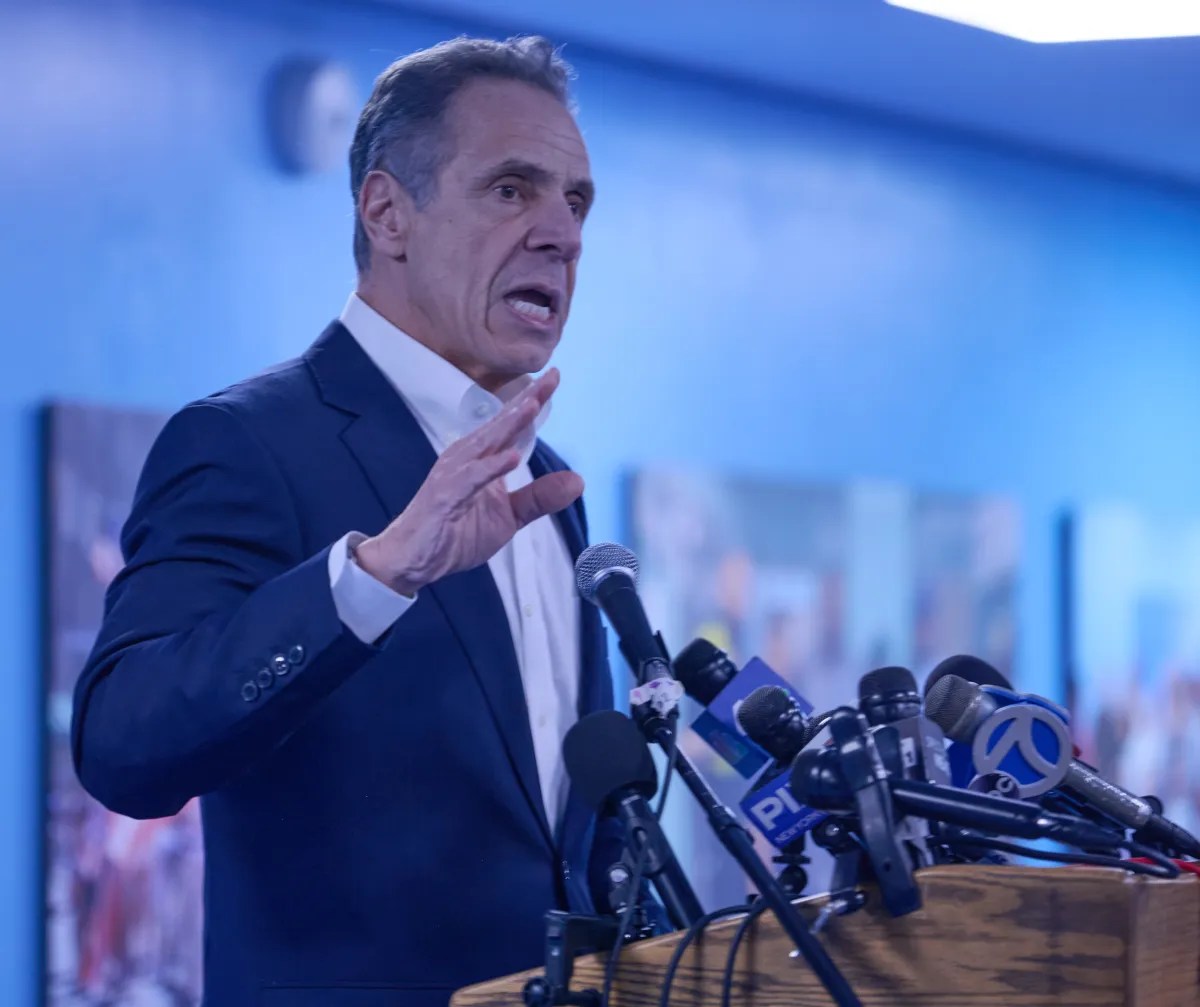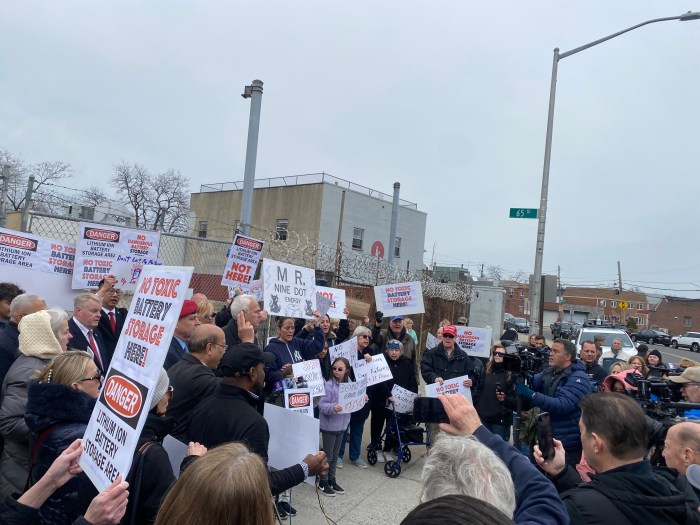While thousands of immigrant children taken from their parents at the border wait to be reunited by the Trump administration, local officials are working to take care of approximately 300 kids who were transported to New York City.
Officials were completely blindsided by the arrival of the children, and have been working to take care of them without any guidance or information from the federal government, Mayor Bill de Blasio said. A nonprofit in East Harlem and two more in the Bronx are currently taking care of the children and placing them in foster homes, he added.
On Tuesday, New York Attorney General Barbara Underwood filed a lawsuit along with 16 other states and the District of Columbia alleging that the federal government’s policy violated the constitutional rights to due process of the parents and children who were separated.
Here’s what we know so far about the children staying in New York City and how the families came to be separated by the Trump administration.
Where are the children being housed?
A foster care center in East Harlem, located at 1916 Park Ave., has been providing services for a majority of the separated children for the last two months, according to de Blasio, who visited the nonprofit on June 20. Children had arrived at Cayuga Centers with mental health issues and physical ailments such as lice, bedbugs and chickenpox, he added.
Since 2013, Cayuga Centers has been a contract agency with the federal government to provide foster care services to unaccompanied minors who cross the border and don’t have a legal guardian in the United States. Since April, however, it has also housed children separated from their parents. Catholic Guardian Services and Lutheran Social Services of New York, both located in the Bronx, also took in a small number of children.
How old are the children?
Children and teenagers under the age of 18 have been brought to the centers, with the youngest being 9 months old, de Blasio said.
How are they being cared for?
Children arriving at Cayuga Centers receive physicals and medical care. They are provided with educational programs geared toward math, English, science and social studies, according to the nonprofit. Activities to promote physical fitness are also offered. The children are placed with foster families and do not sleep at the facility overnight, according to de Blasio.
As of Tuesday, foster parents had also brought at least a dozen children to NYC Health + Hospitals/North Central Bronx and NYC Health + Hospitals/Bellevue for treatment, Robert de Luna, spokesman for NYCHHC said. The children were treated for asthma, constipation and depression, Dr. Daran Kaufman, the director of pediatric emergency services at NYC Health + Hospitals/North Central Bronx, said during a news conference on June 21, adding how the children bore emotional scars that clinicians could not cure. One of the patients was a South American boy separated from his father who tried to jump out of a second-floor window of a group home he was living in, according to the lawsuit filed by Underwood.
Where are they from?
A majority of the children came from Guatemala, El Salvador and Honduras, de Blasio said. Most of them do not have families on the East Coast, he added.
What has the city done to help the children?
The Mayor’s Fund to Advance NYC will donate $10,000 for “affinity objects,” such as teddy bears, to help children cope with trauma, first lady Chirlane McCray has said.
Councilman Mark Levine’s office also collected donations from New Yorkers, which have been sent to several facilities housing the children, a spokeswoman from his office said Tuesday.
Twenty-three members of the City Council, meanwhile, penned a letter to the two nonprofits housing kids in the Bronx, asking to take a tour of the facilities and assess the conditions.
Gov. Andrew Cuomo has promised to provide additional resources, such as social workers specializing in mental health, to facilities like Cayuga Centers. De Blasio has renewed calls for additional foster families to come forward and asked New Yorkers to make donations to legal funds that are working to reunite the children with their parents.
On Thursday, Cardinal Timothy Dolan visited unaccompanied immigrant children at a Catholic Charities Community Services center in the city.
How and when did the family separation policy go into effect?
On April 6, U.S. Attorney General Jeff Sessions announced a “zero-tolerance policy” for immigrants illegally entering the United States, which led the Department of Homeland Security to detain all individuals crossing the border for criminal prosecution. Children, however, cannot be kept in adult detention centers for more than 20 days, according to court decisions made in the Reno v Flores case in 1997. Also called the Flores settlement, it requires the children to be placed with a legal guardian or with child welfare authorities.
Citing the policy, U.S. Customs and Border Protection agents separated the children from their families and put them in different facilities. When video footage of separated children being kept in cages and an audio recording of them wailing were made public, outraged elected officials and immigration advocates amped up their efforts to get the policy reversed.
Among them was Cuomo, who is planning a multi-agency lawsuit against federal immigration authorities, and de Blasio, who travelled to Texas to decry “inhumane” immigration policies.
How did President Donald Trump reverse course?
On June 20, Trump signed an executive order ending the separation of families at the U.S – Mexico border. The move was a complete about-face after he had maintained for weeks that the policy could only be reversed with congressional legislation. New families crossing the border without documentation are now being detained together, which goes against the Flores settlement. On June 21, The U.S. Justice Department filed a motion in Los Angeles federal district court to ignore the Flores stipulation that bans keeping children in adult detention centers.
How will the federal government reunite the families?
U.S. border officials have reunited at least 522 children with their parents, according to a fact sheet released by DHS on June 23, three days after Trump signed the executive order.
DHS, along with Health and Human Services, has a “process established” for reuniting the rest of the 2,053 children, the fact sheet details. The government knows where these children are being kept, according to the sheet.
The document also details how a parent or a guardian can inquire after a child by calling the Office of Refugee Resettlement National Call Center at 1-800-203-7001, or emailing information@ORRNCC.com.
De Blasio maintained on Monday that the city hadn’t received any instructions on the reunification process from the federal government.
What is the latest?
On Tuesday, the American Civil Liberties Union, who had filed a lawsuit to halt the family separation policy earlier this year, won a preliminary injunction in the United States District Court for the Southern District of California granted by Judge Dana M. Sabraw. The judge ordered the reunification of parents with their children within 30 days, and those under the age of 5 within 14 days. He also ruled that phone calls between parents and their kids should be facilitated within 10 days.
“This ruling is an enormous victory for parents and children who thought they may never see each other again,” ACLU’s Lee Gelernt, who argued the case, said in a published post. “Tears will be flowing in detention centers across the country when the families learn they will be reunited.”




































